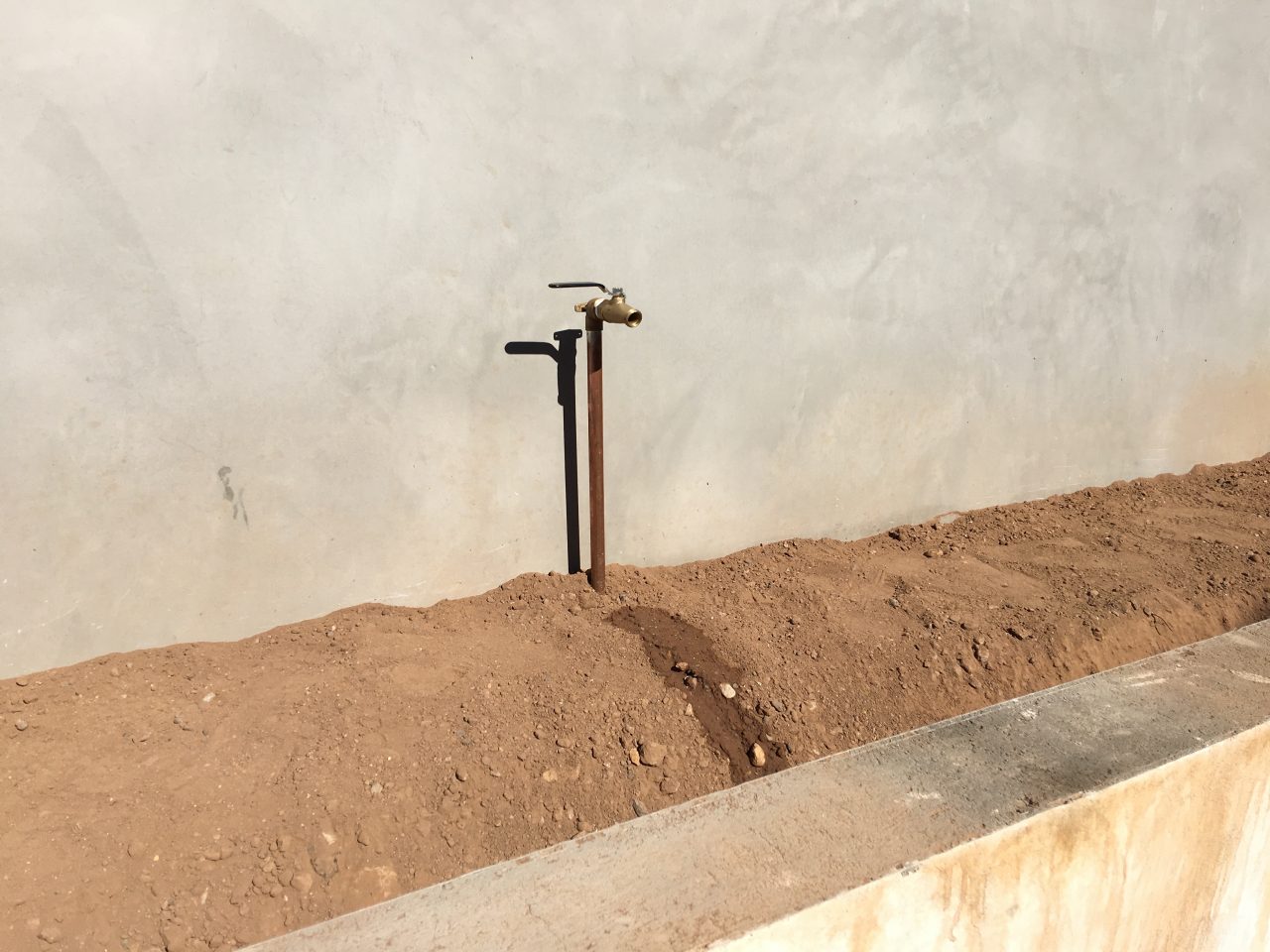After laying all the drainage pipes all over the yard, filling in the trenches, and roughly grading the property, the next step was to dig another set of yet shallower trenches for the irrigation piping.
The irrigation starts where the water main hits the house. From there, the landscaping water goes through the backflow stack.
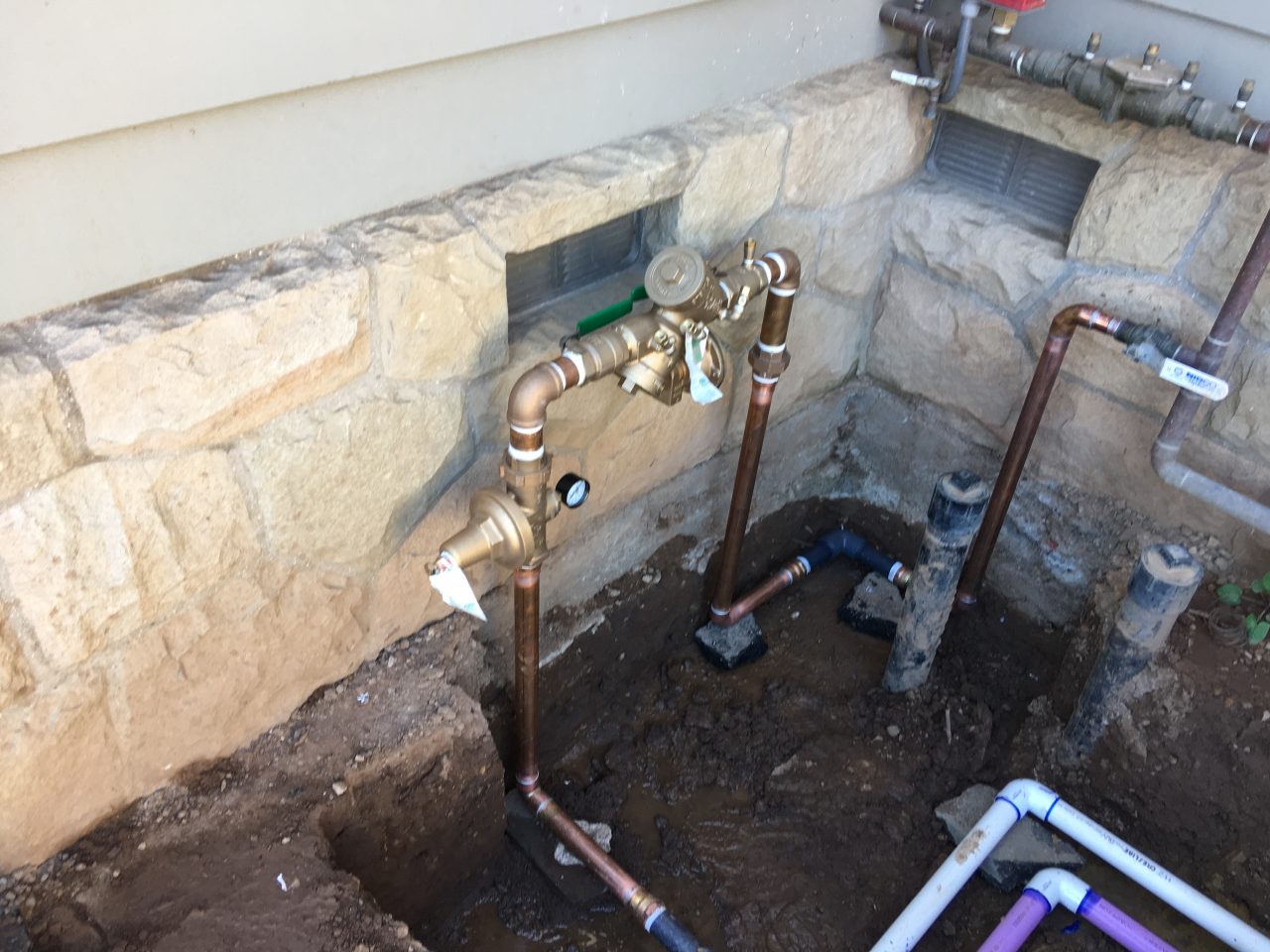
The backflow device prevents any landscape water from getting back into the main water pipe coming from the street, and from there, in to the city water supply. I’m not sure what exactly might cause this to happen, but I can think of a few scenarios. A similar thing happened with our interior water.
One day, we discovered that both the hot and the cold water lines were putting out scalding hot water. After some time and deliberation, it was decided that the root cause was the lack of a backwater valve on the cold water feed into the hot water tank. That, combined with a tub that whose diverter valve had an unused third position (capped off) causes the circulation pump (you know, to get hot water around the house so it is hot when you turn it on) would pull the water through the tub valve and back down the cold water line, all the way to the water heater. Strange, and seems unlikely, but the end result was pretty bad, and any one of our kids could have gotten scalded.
I suspect that building codes require these back flow valves for similar reasons, that in some odd cases, something can end up forcing water back down towards the street, and because landscaping irrigation is at the dirt level, it might pull contaminants into the pipes.
From there, we have a 1 1/2″ pipe going everywhere around the yard. Here it is coming off the water main (before we put in the back flow valve).
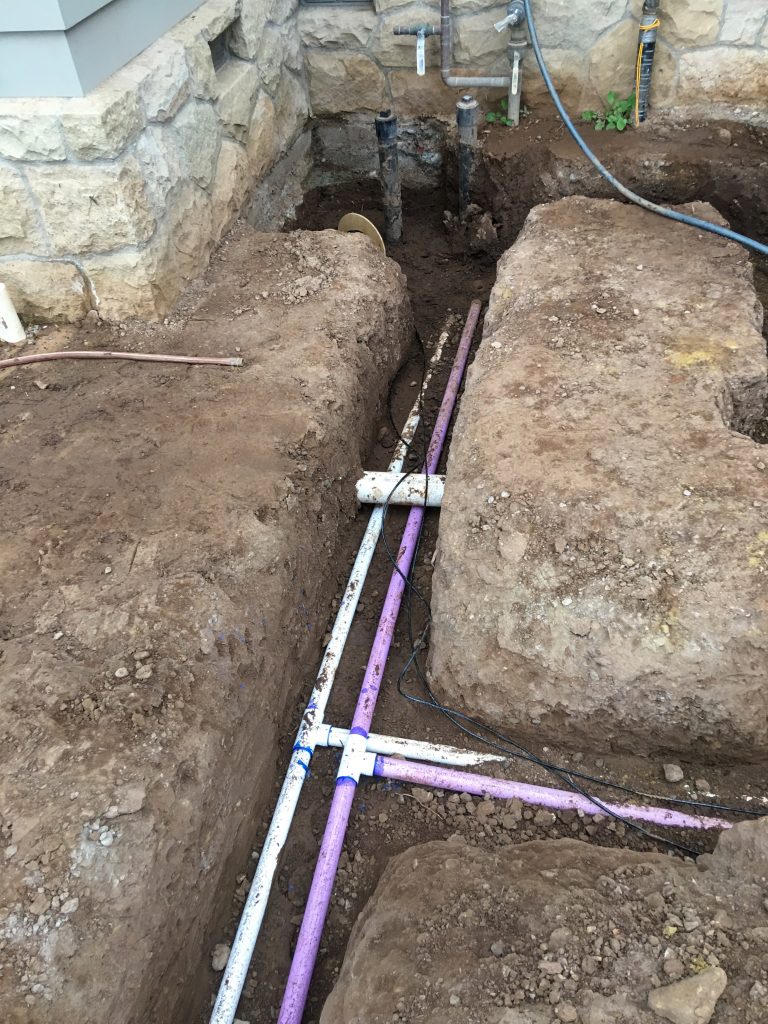
Notice that there is both a white and purple pipe there (and everywhere we are running irrigation water).
In some places, there are a rediculous number of pipes.
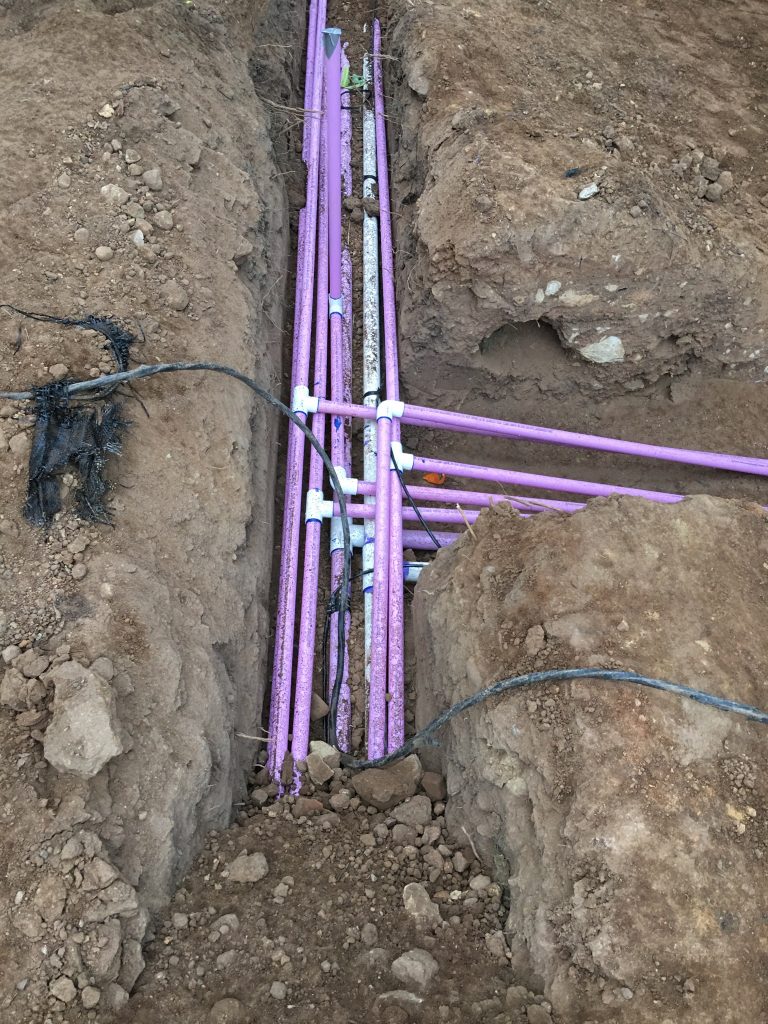
This is because we centralized the valve stations a bit, putting a lot of valves close together for easier management, and then ran smaller lines out to where the irrigation will connect. It is quite the water highway.
The irrigation supply ends in valve stations, like this one.
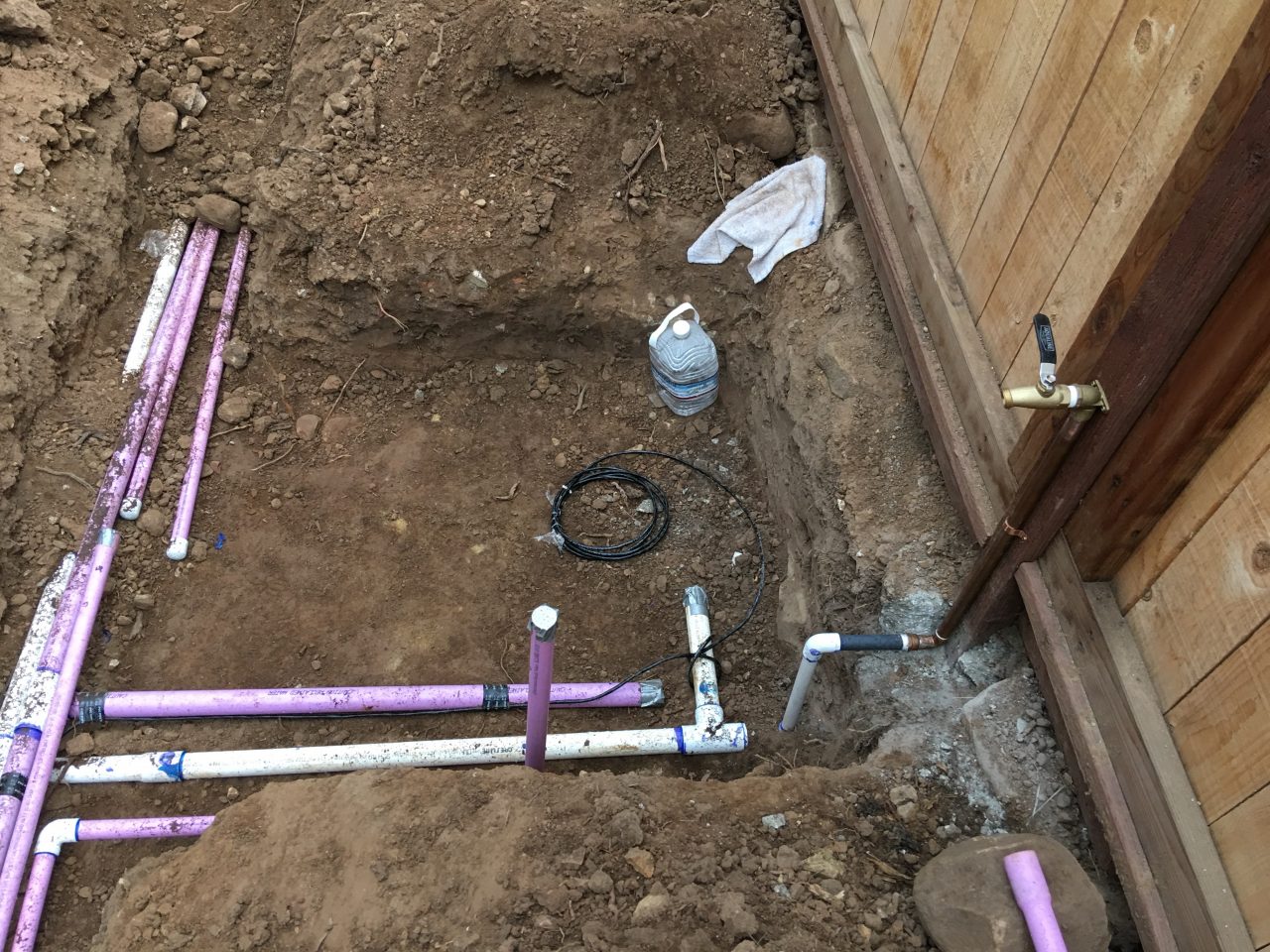
This is where the valves the control the irrigation go. Now, you can see that at each valve station (like the one above, we have both a white and purple line. Purple is the color for reclaimed water, so that everyone knows it is not potable (not to be consumed). The plan is that we want to eventually recover the grey water from our house plumbing, which is plumbed separately from the black (septic) water. We can pick it up at the point where it connects to the sewer (conveniently 8 feet underground ha ha), filter it, store it for less than 24 hours, and then pump it into the second purple irrigation supply line, to be used to water the landscaping.
Because some things can’t be watered with reclaimed water (primarily edibles and anything that sprays into the air, like lawn watering) we need to be able to choose at each location whether to water with potable water, or grey water. This is exactly what each valve station will have, a set of valves that will allow us to turn on either of the sources for a particular use. We decided that this was the simplest way to future proof the irrigation for the use of reclaimed water. (Now we just have to figure out how to filter and pump it.)
Today was the culmination of much of this effort, as we were able to pressurize the line, and now all of our hose bibs are live. No more dragging a 200 foot hose around the yard!
